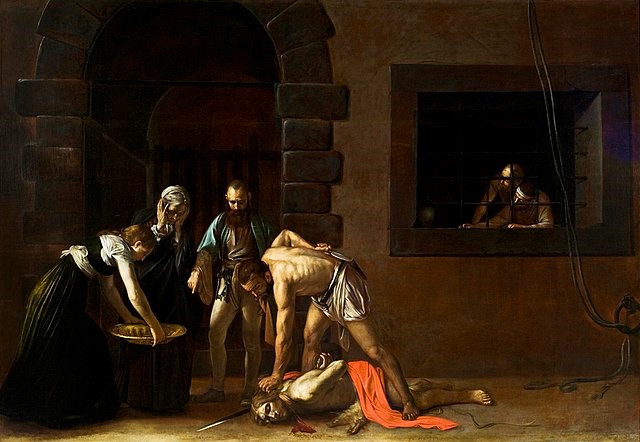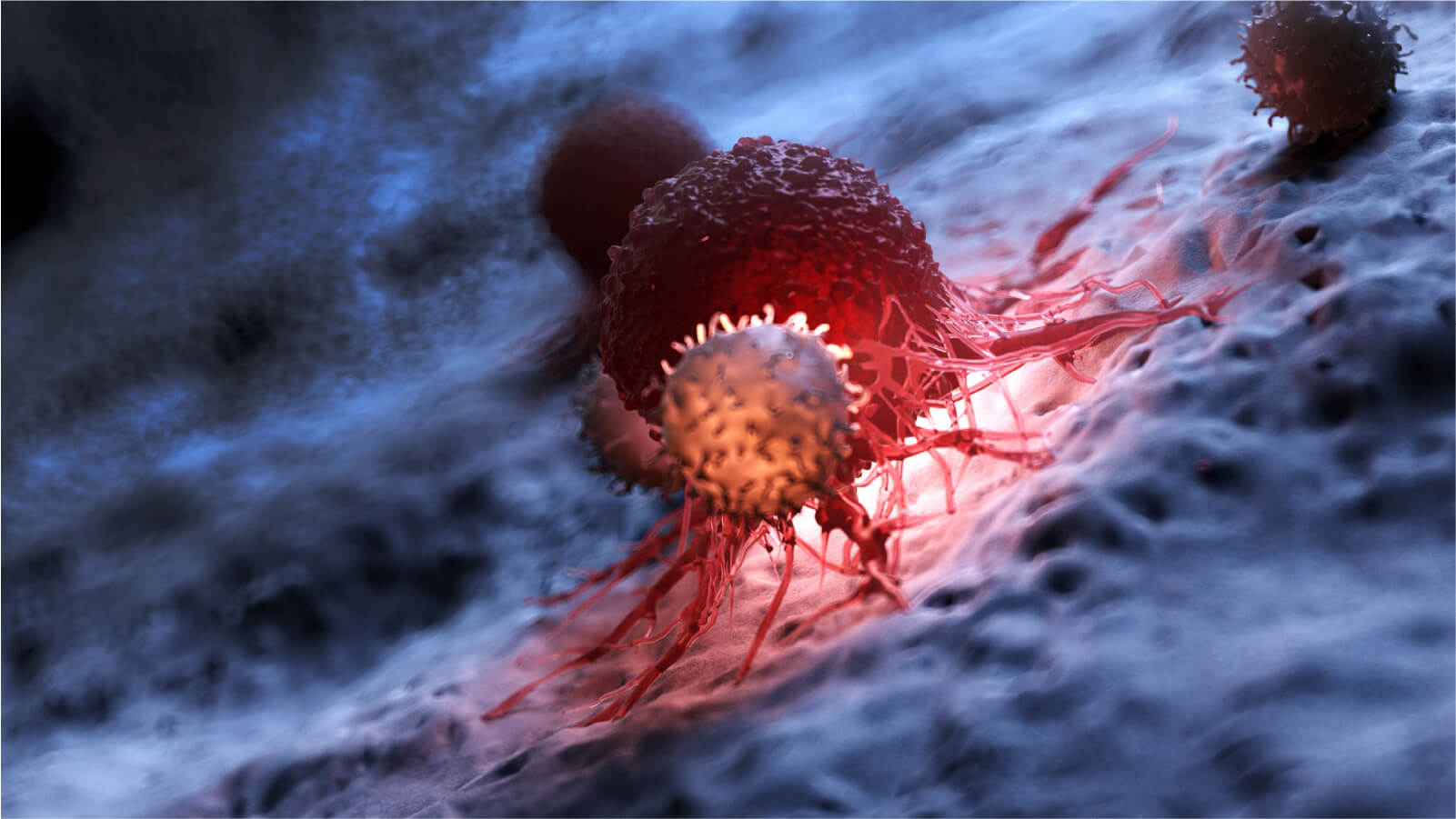
Q1. What is happening in this picture?
A1. A semi-naked young man wearing a red garment is being executed by beheading by a semi-naked muscular man of a similar age, who is holding his brown hair in his left hand and wields a knife in his right, behind his back. Blood is oozing from his neck onto the ground. Five people are witnesses to the execution; three close-by: two women and a man, and two men on the right of the picture, looking out of a barred window, which could be a prison. The younger woman, seen in profile, is leaning forward holding a golden basin. The older woman is in the middle and an older man points to the basin as if ordering the executioner to finish the beheading and put the head into it.
Q2. What strikes you most about the way the painting is made?
A2. The most striking thing is the strong contrast of light and dark and the way in which the main action is placed on the left-hand side of the painting.
Q3. Describe the reaction of the onlookers?
A3. The executioner is concentrating on his task while the man to his right appears to have some authority as he directs what is going on. The younger girl on the left concentrates on her task of receiving the head into the basin she is holding. The only person who expresses horror at the beheading is the older lady in the middle who holds her head with both hands. The two prisoners look on with the realisation of their own fate.
Q4. Does the artist give us any indication of who the people are in the painting?
A4. No. Yet, we know from the title that this is the martyrdom scene of St. John the Baptist on the orders of Herod whom John the Baptist had reprimanded for divorcing his wife, and taking his brother’s wife, Herodias, as his. When her daughter, Salome, pleased Herod with her dancing, he promised her anything she wanted. She asked for the head of John the Baptist.
Caravaggio, a master of Baroque realistic painting, does not show, as had been usual in the Renaissance, that this is the martyrdom of a saint. Martyrdom scenes were common themes in Renaissance art. A saint was usually indicated by a golden halo around their head.
Notes: Caravaggio, whose real name was Michelangelo Merisi, was from Caravaggio, a small town not far from Milan. He led a turbulent life having to flee from Rome to Malta after killing a man. This painting, commissioned by the Knights of Malta, is his largest (3.7m/12 feet X 5.2 m/ 17 feet), and his last, and the only picture signed by the artist. The signature “f. michang.o” is written in the blood; ‘f’ meaning, a brother of the Order, and his shortened name, ‘Michelangelo’. He was, briefly, a brother of the Order, but was defrocked in the same Oratory where the painting still hangs, for some unrecorded crime.

